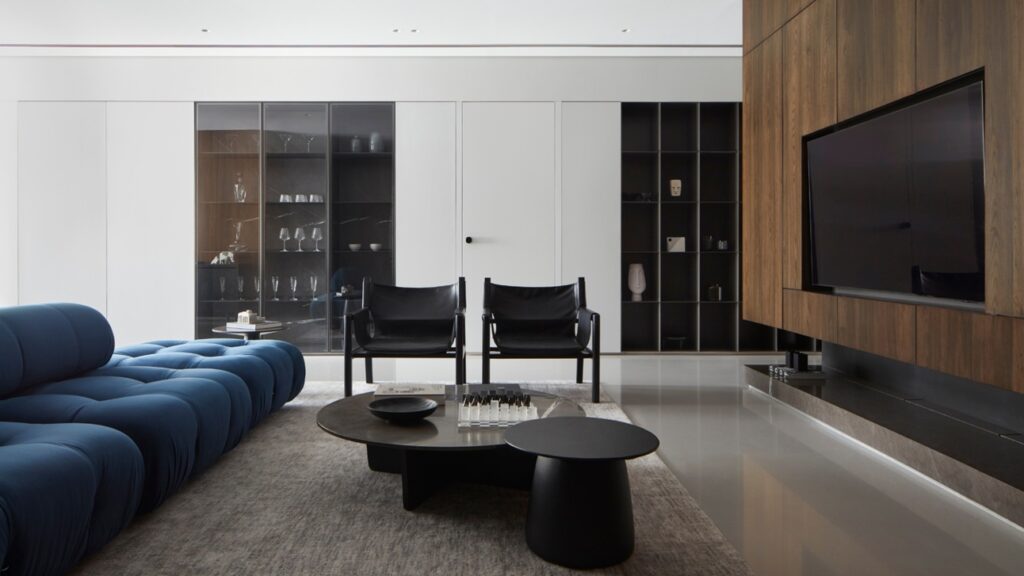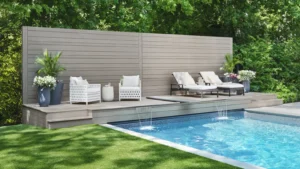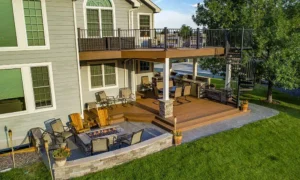
Behind the carefully curated Instagram posts and glossy magazine spreads, modern interior design has become the unlikely battleground where technology, psychology, and economics collide to reshape how millions live, work, and think about their most intimate spaces. What appears to be simply an aesthetic choice masks a complex web of market forces, cultural shifts, and technological disruption that few truly understand.
The Data Beneath the Surface
The numbers tell a story that design magazines rarely acknowledge. The global interior design market, valued at $137.9 billion in 2024, isn’t merely growing—it’s exploding at a compound annual growth rate of 8.3%, driven by forces that extend far beyond simple beautification. In Singapore alone, where space constraints have created laboratory conditions for innovation, residents spend an average of $60.11 per capita on home décor annually, embracing minimalist functionality not by choice, but by necessity.
This isn’t decoration. This is adaptation.
The Technology Infiltration No One Talks About
Beneath the surface of what the industry calls “contemporary interior design,” a technological revolution is quietly rewiring our domestic spaces. Industry insiders reveal that 48% of design firms introduced artificial intelligence tools in the past year alone, fundamentally altering how spaces are planned, optimised, and even how we unconsciously interact with our environments.
The implications reach beyond convenience. These AI-driven systems are collecting unprecedented data about human behaviour patterns, sleep cycles, and daily routines—information that flows back to tech companies with purposes that remain largely undisclosed to homeowners.
Singapore’s Laboratory of Constraint
In Singapore’s dense urban environment, where every square foot commands premium prices, modern interior design has evolved into something approaching engineering precision. The nation’s embrace of minimalist, functional styles isn’t a cultural preference—it’s a survival strategy. Limited living spaces have forced innovations that are now being exported globally, creating what industry analysts call “optimisation-driven aesthetics.”
The Singaporean model reveals how economic pressure shapes design philosophy. When space costs thousands per square foot, every design decision becomes a calculated investment. Multi-functional furniture isn’t trendy; it’s essential. Storage solutions aren’t features; they’re lifelines.
The Wellness Industrial Complex
Perhaps nowhere is the intersection of commerce and psychology more evident than in the rise of “wellness-focused design.” What began as incorporating plants and natural light has morphed into a $72.7 billion luxury interior design sector that promises to engineer emotional states through environmental manipulation.
Industry reports show 37% of firms launched wellness-focused interior services in 2023-2024, but the science behind these claims remains largely unexamined. Clients pay premium rates for spaces designed to reduce stress and increase productivity, yet few studies validate whether these environments deliver measurable psychological benefits or simply provide expensive placebos.
The Sustainability Smokescreen
The industry’s embrace of “sustainable interior design” presents another layer of complexity. While firms tout eco-friendly materials and energy-efficient systems, market analysis reveals sustainability often serves as a premium pricing justification rather than a genuine environmental commitment.
The contradiction becomes stark when examining global supply chains: materials marketed as “locally sourced” frequently travel thousands of miles before reaching installation sites. The carbon footprint of shipping bamboo flooring from Asia to Western markets often exceeds that of traditional alternatives, yet it commands higher prices due to “green” marketing.
Regional Power Dynamics Hidden in Plain Sight
The dominance of certain design aesthetics isn’t accidental. Market research reveals how:
• Scandinavian minimalism spreads through social media algorithms programmed to promote certain visual styles over others
• Contemporary design trends often originate from tech company offices, influencing residential aesthetics as remote work blurs home-office boundaries
• Asian design influences gain prominence as manufacturing centres shift, creating aesthetic preferences that align with production capabilities
• Luxury design markets concentrate in specific metropolitan areas, creating design deserts in other regions
These patterns reflect economic realities rather than organic cultural evolution.
The Renovation Economy’s Dark Side
The remodelling segment, projected to grow at 5.3% annually through 2030, masks troubling economic pressures. Rising property prices have trapped homeowners in spaces they can’t afford to leave, forcing them to renovate rather than relocate. What the industry celebrates as “renovation enthusiasm” often represents economic desperation dressed in design language.
Interviews with homeowners reveal renovation decisions frequently driven by necessity rather than choice: ageing infrastructure, energy efficiency requirements, and property value preservation in uncertain markets.
The Future Architects Don’t Want You to See
Looking beyond industry projections, the trajectory of modern interior design suggests profound shifts ahead. The integration of smart home technology isn’t creating convenience—it’s creating dependency on systems controlled by entities with interests that may not align with homeowner welfare.
The residential design market’s expected 12.4% growth rate through 2030 coincides with increasing housing unaffordability, suggesting a future where people invest more in optimising smaller spaces rather than accessing larger ones. This represents a fundamental shift in how society defines domestic prosperity.
As artificial intelligence, economic pressure, and technological surveillance converge within our most private spaces, the choices we make will determine whether our homes remain sanctuaries or become sophisticated monitoring stations where aesthetics mask the surrender of privacy and autonomy, making every decision about modern interior design a choice between comfort and control.







